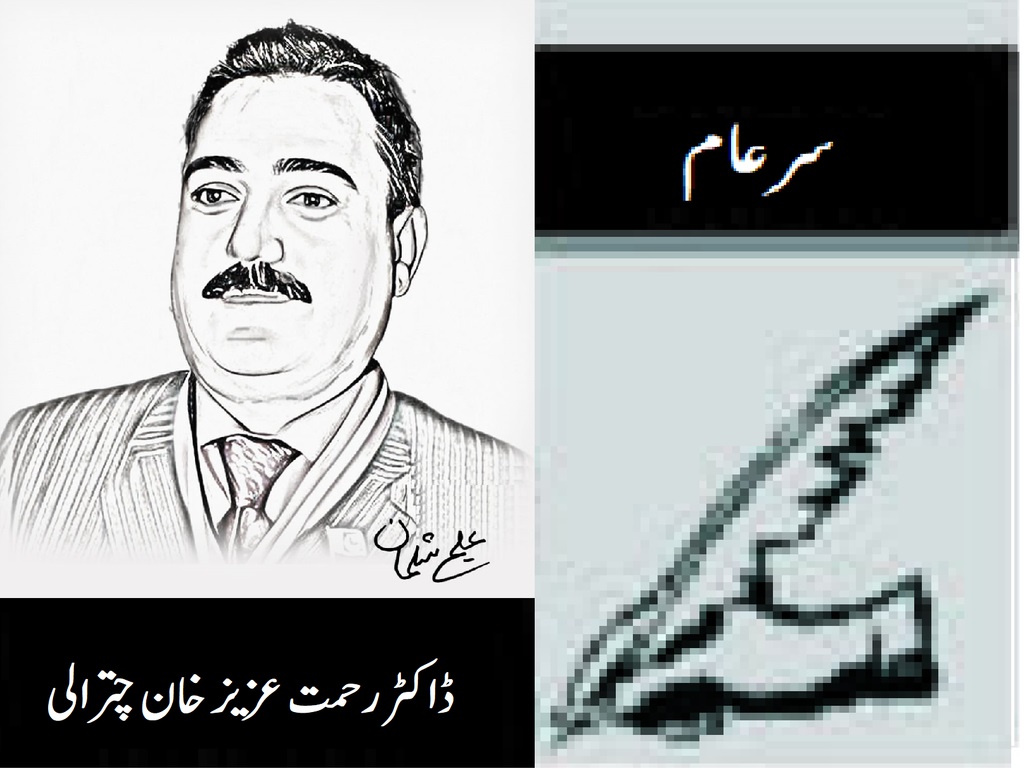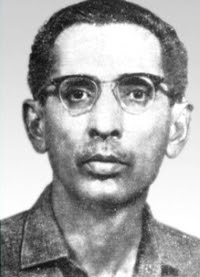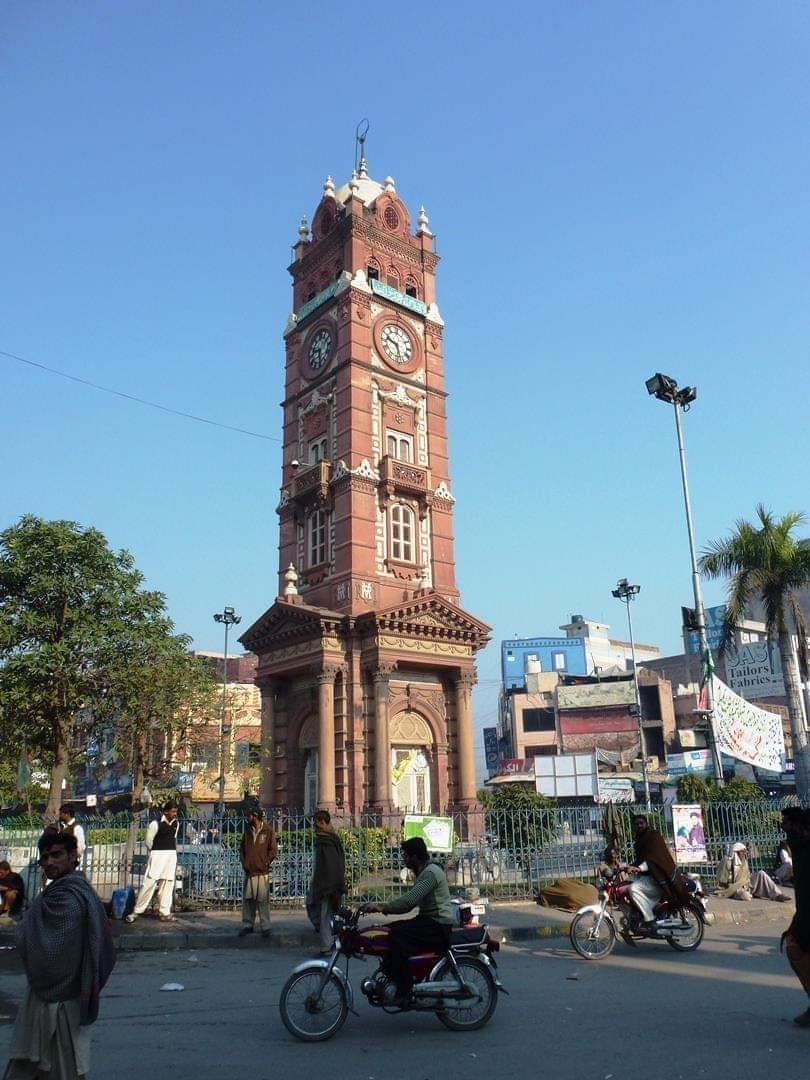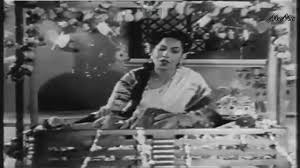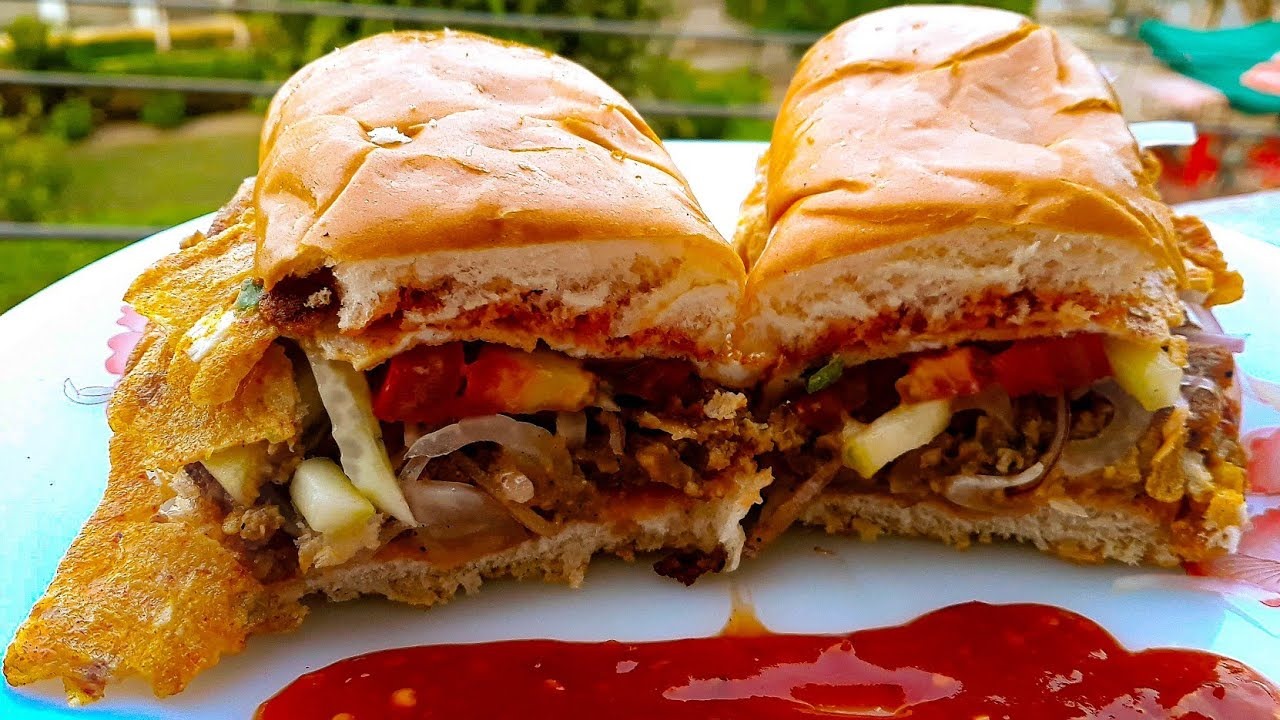For the first time, The Left in Pakistan has one Member of Parliament. Ali Wazeer belongs to Pakistan Trade Unions Defense Campaign, the group is a part of Left Democratic Front Pakistan. The LDF is not yet formally launched but various efforts are been made to unite the Left forces in Pakistan on one broad based front.
The Left Democratic Front includes Awami Workers Party, Pakistan Mazdoor Kissan Party, Communist Party of Pakistan, Awami Jamhoori Party, Sindh Mutihada Mahaz, Pakistan Trade Unions Defense Campaign and two more groups.
The Awami Workers Party was established in 2012 after merger of three Left parties, Labour Party Pakistan, Workers Party Pakistan and Awami Party. AWP has held two congresses. With more than 5000 members, it contested the general elections of 2018 with 22 candidates. It was unable to make a mark on the political scene in Pakistan and could not win any seat. AWP has however, at present 158 district, tehseel and union council level elected counselors across Pakistan.
The Pakistan Trade Unions Defense Campaign leader Ali Wazeer won the national assembly seat from South Wazeerestan, an area dominated by religious fanatics. He is also one of the main leader of Pashtun Tahafaz Movement, (PTM) a civic rights mass movement in areas affected by the so-called “war on terror”.
Ali Wazeer has opposed Taliban in his area and has paid a heavy price in shape of losing 15 of his relatives including his father and two brothers. He contested as an independent candidate despite efforts by Imran Khan to bring him in his Pakistan Tehereek Insaaf as PTUDC is not a registered political party at Election Commission of Pakistan.
The total votes of all the Left groups and parties during the 2018 general elections is around 50,000. Ali Wazeer vote was around 23,000. This express the weak parliamentary side of the Pakistani Left. They have to pay a serious attention to this field.
Pakistan Mazdoor Kisan Party has presence among a section of some peasants in Khaiber PakhtoonKhawa province. It is remnants of old Maoist groups of the seventies. Communist Party Pakistan exists without a mass base in any area.
At present, The Left in Pakistan is a weak force in terms of numbers of membership, influence in the movements and the trade unions, peasant organization and among the social movements. There are several factors that has to be kept in mind.
There is a growing right wing wave and the political competition at present is among the right versus right unlike Nepal. The religious fundamentalism has taken mass roots among important sections of the working class. There is a difficult objective conditions for the growth of the Left.
The trade union movement is at his worst. Less than one percent of the total working class in Pakistan is organized in trade unions across Pakistan with a population of over 200 million. The trade unions mainly exist in public sector and in some multinational companies.
The nature of Pakistani capitalist is such that it has never tolerated the democratic culture. It always rests on religion and army. The Pakistani capitalist class is oppose to the formation of trade unions and do its best to crush it all the times. There is labour department that is mainly in the service of the bosses.
32 of the 71 years of so-called independence was under military dictatorships. At present, although apparently military is not in power but in fact, it did his best to defeat the previous Muslim League conservative neo liberalist government and helped Imran Khan’s Pakistan Tehreek Insaaf into power with the same ideological base. They did all this because Mian Nawaz Sharif was perusing policies against the established norms of the military dictates including trade with neighbours, refusing to send army to Yemen despite Saudi Arabia demand and civilian supremacy over the military hierarchy.
Pakistan still has a feudal class that works hands in hand with the capitalist class. Both are relatives of each other and cooperate with each other. They are not against each other and we can never expect the Pakistani capitalist class would repeat the historic role of European counter parts to eliminate feudalism, strengthen democracy and separate religion from the state. They are a dependent weak ruling class working as agents of the world imperialism. They are mainly distributors and not producers. A weak industrial base is established that is totally dependent on the whims of the international capitalist market. All the historic tasks of modernizing the society lies on the shoulders of workers and peasant government.
In this difficult objective conditions, we have to look the development of the Left forces in Pakistan.
The Left in historic perspectives
The 200 years of the oppression of the British Raj was fought well by ordinary people of the Indian subcontinent. The partition of the Indian sub-continent led to the largest transmigration of mankind in modern history. It was also the bloodiest migration. At least one million innocent souls perished and about 16 million crossed border. The British imperialist rule ended with the same policy with which it had begun…. divide and rule.
The influence of Bolshevik Revolution of 1917 and establishment of USSR had great impact on the colonial world and Indian sub-continent was no exception. The establishment of The Communist party of India in 1925 was a great step forward for the defense of the working class under colonial rule.
The left movement in Pakistan traces its origins to the Indian communist movement.
The Indian communist movement in turn drew its inspiration from Russian revolutions of 1905 and October 1917. Lenin himself paid considerable attention to India, and, long before him, Karl Marx showed a great interest in what he called "an interesting country" and a "good future ally". He wrote quite a few articles on the Indian subcontinent, especially during the 1857 war of independence, which ended in defeat. That defeat strengthened and consolidated the imperialist base for a century, an era of exploitation, plunder and repression.
During their first 15 years of existence, The CPI led several struggles and resistance against British raj. This culminated in the infamous Meerut Conspiracy case of 1929. This was similar to Kanpur Bolshevik conspiracy case of 1924. The main aim was to crush the CPI leadership who were founding new grounds all over. 27 leaders of CPI were sentenced to terms of imprisonment varying from life to three years in this case during 1933. One can say with justice that the Meerut conspiracy case placed communism on a sure footing in India.
The hanging of Bhaghat Singh and his comrades was another manifestation of the same treatment. Lala Lajpat Rai, a radical lawyer and a leader against British Raj was beaten up by British police while protesting against the arrival of Simon Commission in 1928 at Lahore. He died on 17th November 1928. On 8th April 1929, a young revolutionary Bhaghat Singh and his three comrades associated with Gadar Party took the revenge by killing a British police officer Saunders. The hanging of Bhaghat Singh and three of his comrades on 23 March 1931 at Lahore Camp Jail sparked a new wave of struggle against British colonial rule.
In 1938, with the slogan of a “Workers Socialist Republic”, and “Government of the Workers and poor peasants” the CPI was able to mobalise 50,000 workers in Calcutta. Kassan Sabah of CPI, registered over 500,000 to attend the Kissan Conference. In 1939, the resolution passed by this conference demanded the full political freedom and independence that could be obtained only under the rule of the people.
In the meantime, the Third International under the leadership of Stalin had gone through a whole period of degeneration. From the "Third Period" to popular fronts and from the non-aggression pact with Hitler to alliance with the allies, the Comintern had taken many somersaults. A degeneration of the Soviet leadership manifested itself in its bankrupt theory of “socialism in one country” and two-stage theory of revolution.
At the beginning of the Second World War and especially after Hitler-Stalin pact, the CPI launched an intensive antiwar campaign. It called it imperialist war. The first ever antiwar workers demonstration in the world took place in India on 22nd October 1939 with a one day general strike. Thousands of antiwar CPI workers were put in jail during this antiwar campaign by CPI.
After Hitler attacked Soviet Union on 22nd June 1941, the policy on antiwar changed into “peoples war” by CPI. This was in line with the police of Stalin in USSR. The CPI cooperated with the British imperialism in Indian sub-continent during this period while the bourgeois parties like Indian Congress was still demanding independence and tactfully supported the allies in the war. They stressed that India could not fight under British rule and demanded an independent India. “We will do a better job” was the message of Congress. The CPI compromised the national consciousness against British Rule to please the International priorities of USSR at that time. The Churchill-Stalin alliance was preferred, however, to the liberation of India by The CPI.
The CPI has also made a political mistake by supporting “Muslim nationalism” and supported the partition. The two nation theory that Muslim needs a separate country was an ideological compromised policy. A nation cannot be based on religion.
The Communist Part Pakistan
The Communist Party of Pakistan (CPP) inherited not only cadre from the CPI but also its ideological legacy i.e., the two-stage theory of revolution. Following their theory, they joined the Muslim League. In the Muslim League, they supported the bourgeoisie against the feudal lords. But the Muslim League was and always had been a party of Muslim feudalists. These feudal soon managed to rid their party of the "infiltrators". These purges drove the CPP to another extreme. Instead of organising the working class independently, it talked and thought about a shortcut “a coup”.
The state banned CPP in 1952 alleging them to overthrow the government through a military coup. Although, there was no attempt of coup. Most of the CPP leaders were arrested and remained in jail for years.
Following the ban, CPP members formed the Azad Pakistan Party (Independent Pakistan Party). This party was led by a radical nationalist, Mian Iftikhar-ud-Din. In 1957, the Azad Pakistan Party merged with some other liberal progressive groups to form the National Awami Party (NAP-National People's Party). Anti-imperialism, secularism, regional autonomy and industrialisation were features of its program.
After the merger, the Communists dissolved their independent identity and did not organise any class movement independently. In 1958, as the capitalist crisis worsened, the workers took to the streets. A working-class movement had begun across Pakistan. It also affected the peasantry. In the same year, NAP leader Maulana Bhashani (who belonged to the then East Pakistan, which is now Bangladesh) formed an All Pakistan Peasants Association (Kull Pakistan Kissan Association). A working-class movement began in Lahore that gripped the whole country. To crush this movement, General Ayub imposed martial law on October 26, 1958.
Pro-China and Pro-Moscow Left
In the meantime, trends among Pakistani Left were divided into pro-China and pro-Moscow.
When in 1965, war broke out between India and Pakistan, it was called a people's war by the Chinese government, which gave full support to Ayub Khan's dictatorship and Pakistani chauvinism. Pakistani Maoists started supporting Ayub Khan. They also declared Ayub Khan's foreign policy progressive.
In 1967, a Chinese trade delegation visited Pakistan. The statement by the head of the delegation said: "Led by General Ayub Khan, Pakistan has made a great development in the fields of agriculture as well as industry. The day is not far when Pakistan will achieve total economic independence.
The Soviet government was not playing a radical role either. It was supporting the Indian bourgeois. The line for the pro-Moscow left during this period can be gauged from an extract from a monthly party organ, Outlook. In April 1964 it wrote: "Our newly emerging bourgeois will come in conflict with the international bourgeois. Driven by economic compulsions, Habib Ullahs, Sehgals and Walikas will have to turn to socialist bloc for trade. This process will end western monopoly on our economics. This is where we are heading for. And I will be the biggest mad if I oppose General Ayub for this door opening towards left."
To another question, the same issue suggested that, were the masses conscious, the "basic democracies" could become “training institutions for soviets”.
“Basic Democracy” idea was Ayub Khan’s brain child for giving him space as “elected” leader through “elected” counsellors.
The left itself remained divided into pro-Moscow and pro-Beijing. The former would support one section of the bourgeoisie, terming it progressive, while the latter would support the other section of the bourgeoisie, terming that progressive.
The left during this period failed to see the unprecedented economic growth internationally. The post-World War II capitalist boom also affected Pakistan. A process of significant industrialisation had begun for the first time, giving birth to capitalism's gravedigger, the proletariat, in a big way.
The left during this period, instead of organising and associating itself with the new layer of the proletariat, was hunting for progressives among the bourgeoisie to whom it could lend support. Its flirtation with the working class was confined only to sloganeering. This was why, when a revolutionary movement, the first of its kind, began in 1968-69 and explosive revolutionary events swept away the military dictatorship which had made dictator Ayub the richest president of the poorest country, the left was taken aback.
During the Revolutionary movement of 1968-69, which went on for few months, two parallel powers were in operation. On one hand, workers and peasants controlled the country. On the other hand, due to the absence of proletarian leadership, the bourgeoisie was in control of the state apparatus.
The Pakikstan Peoples Party
The Ayub dictatorship during sixties was opposed by one of his former minister Zulfiqar Ali Bhutto who used the slogan of Socialism.
The Pakistan People's Party (PPP) was formed on September 1, 1967. Its program was radical socialist; The Communists (both pro-Moscow and Maoists) were supporting the Ayub dictatorship, while Bhutto was representing the masses' feeling.
Bhutto, himself a feudal lord from Sindh, had been foreign minister in Ayub's cabinet. An intelligent bourgeois politician, he raised the slogan of socialism and joined hands with some leftists to form the PPP. When the Ayub dictatorship started targeting Bhutto, he became a symbol of resistance, strengthening his popularity and his grip on the party.
The Left forces belonging to NAP who was offered an electoral alliance by Zulfiqar Ali Bhutto during the 1970 general elections refused and were defeated badly by Bhutto who took 83 national assembly seats from West Pakistan while a land slide victory of Sheikh Mujib Awami League in East Pakistan was not accepted by the military dictatorship of Yahya Khan. They did not hand over power to Sheikh Mujib despite his absolute majority in Pakistan.
Bhutto helped the military generals in this process. The military operation against the Bengalis by the Pakistani army was supported by Bhutto and was opposed by handful of Left activists in West Pakistan, a shining example of taking a principled position at difficult times.
The Independence of Bangladesh was the last nail in the coffin of the two nation theory.
During the seventies, many Left activists became part of Pakistan People’s Party of Bhutto who played with the ideas of socialism. However, before the general elections of 1977, PPP was totally dominated by the feudal lords under Bhutto.
The Zia Dictatorship
The Left activists made heroic sacrifices against the military dictatorship of General Zia during his 11 years of rule. Bhutto was hanged in April 1979 and Zia was supported whole heartedly after the Saur Revolution in Afghanistan during the end of 1978.
US imperialism helped and promoted the Mujahidin with the total support of Zia Ul Haque. Madrassas mushroomed all over Pakistan with Saudi Arabia money and a process of Islamisation of the society started. During this period, most of the leading Left figures and activists were in jail while opposing military dictatorship.
Left in the 1980s
The 1980s were years of resistance against the dictatorship. A section of proletariat offered heroic resistance and an unprecedented fight back. For the left it was a decade of mergers and alliances.
Bhutto's hanging once aging popularised the PPP, and it became a symbol of resistance against dictatorship. A united front, Movement for Restoration of Democracy (MRD), was formed. The PPP right wing, liberals and the left all joined hands on this platform. A united front against dictatorship was a correct policy.
By this time the Communist Party (pro-Moscow ), Workers Peasants Party (MKP, a Maoist party) and Socialist Party (a breakaway from CP) had some good mass bases in different areas. But they did not use these bases to launch an independent and organised struggle.
The national question during this period became even sharper because of ruthless oppression by the regime in Sindh, North-West Frontier Province and Balochistan.
In 1986, Pakistan National Party, a faction of MKP, National Democratic Party and Awami Tehrik (People's Movement), all four pro-Moscow groups, merged to form Awami National Party (People's National Party.
Soon the Pakistan National Party dissociated itself from the merger, followed by Awami Tehrik and the section of MKP.
In 1987, QIP (National Revolutionary Party — Qaumi Inqlabi Party) was formed again as a result of mergers among different left and bourgeois nationalist parties, but after one year it was disbanded.
In 1988, Qaumi Mahaz-e-Azadi (National Liberation Front), a Maoist party, and the Workers Party (a breakaway from Socialist Party) merged to form AJP (Awami Jomhori Party — People's Democratic Party), but barely a few months had passed when, on the eve of an election, the merger was split. The National Liberation Front, led by late Meraj Mohammad Khan, left the party.
However, in 1986 a new element had entered the politics of the Pakistani left. This was the Struggle Group, activists who called themselves supporters of the monthly Mazdoor Jeddojuhd (Workers Struggle). The Struggle Group, formed in 1980 in the Netherlands, was working within the PPP because this was a period of fight back for democracy and the working class had many illusions in the PPP.
In 1986, the group's main leadership returned from exile because there were limited liberties available now under the military dictatorship.
Disillusionment with the PPP and the break-up of the USSR generated hopelessness and desperation. The Left in Pakistan, as elsewhere in the world, turned to social democracy. The early 1990s were a period of counter-revolutionary consciousness in Pakistan, giving birth to the rise of fundamentalism.
The Struggle Group, however, did not lose faith in socialism. It ended the entrist policy in view of its analysis that the working class would leave the PPP from now on and that an alternative should be built. To build this alternative party, it launched initially “Young Fighters” and later a “Jeddojuhd Inqlabi Tehrik” (Struggle Revolutionary Movement) in 1993 for the formation of a workers' party by the trade union movement. In 1997, after some success, it formed the Labour Party Pakistan.
The other comrades in “The Struggle” (in 1992) continued to work in the same strategy and tactics. Apart from the continued orientation towards PPP (until 2018) The Struggle group also created avenues of independent work with the frontal setups such as the PTUDC in the trade unions, BNT (Be-Rozgar Naujawan Tehreek) mainly amongst the unemployed youth and RSF ( Revolutionery Students Front) for the students work. Comrade Ali Wazir has been the CC member of The Struggle since 2006.
From 2015 onwards the comrades, who founded The struggle in Amsterdam in 1981, developed links and have been working in close collaboration. They have agreement on the fundamental ideological issues, Marxist internationalism and Socialist character of Pakistan and South Asian Revolution.
The Communist Party and MKP merged in 1994 to form CMKP (Communist Mazdoor Kissan Party). On June 3, 1999, another three parties — AJP, Pakistan National Party and Socialist Party — merged to form the National Workers Party (NWP). NWP later became Workers Party Pakistan.
And in 2012, Awami Workers Party was established after months of discussions among the three Left parties.
Fanoos Gujjar, President of AWP who passed away on 1st December 2018 has laid down some mass basis among the most exploited section of working people in Khyber Pakhtunkhwa province for AWP to follow up after his sudden death.
Ali Wazeer, an MNA from Wana, is another strong voice for the most down trodden victims of imperialist “war on terror”.
Another mass civic movement has erupted in 2018 in shape of Pashtun Tahafaz Movement.
The most powerful rebuttal of orientalist depiction and media coverage was offered in the form of PTM. Earlier this year, for months, the PTM mobalised hundreds of thousands people, besides inspiring millions others, against state sponsored “war on terror”. Beside holding huge mass rallies across Pashtun areas, the PTM has also exposed hypocritical state policy on the Taliban.
The PTM movement has established the view point presented by the Pakistani Left since 9/11. Opposing the US occupation of Afghanistan, the Pakistani Left was pointing out that a military solution of fundamentalism will only galvanise the fundamentalists in the region. Earlier we only have the so-called Taliban ruling Afghanistan, now they have been ruling parts of Pakistan. On top of that, ISIS is firmly in control of at least 3 provinces in Afghanistan besides a footprint in Pakistan. The Pakistani Left is mainly united in its ideological and political fight against fundamentalism. And that is encouraging.
It seems that the Left is been able to lay down some basis among the rural areas and small cities and main urban centres are still waiting a break through.
However, another good news of 2018 is some new developments among the young students who are witnessing for the first time a radical wave mainly among the students from elite and upper middle class. Several new radical Socialist youth groups have emerged. That gives some new hopes for the growth of the Left in Pakistan.
Future downsizing, privatization, poverty and ever increasing joblessness will make workers take to the streets, and the Left will get a chance to organize these radicalized masses. But at the same time, fundamentalists may appear as a major challenge to the growth of the Left. However, the Left with its historic sacrifices for Socialism and democracy in Pakistan is striving for a break through and struggling to make it happen.

